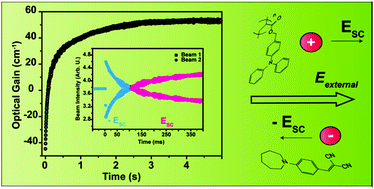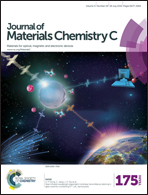Electron dominated grating in a triphenylamine-based photorefractive composite
Abstract
Photorefractive (PR) composites based on a p-type triphenylamine photoconductor with the nonlinear optical chromophore 7DCST have been fabricated without using a typical sensitizer of C60 or its derivative PCBM. The effect of an added electron trap, Alq3, on the PR performance has been investigated through optical wave mixing experiments with a pumping wavelength of 532 nm. The decay time of the photo-induced refractive index grating in the dark was significantly improved by the addition of Alq3. The net gain measured by two-beam coupling experiments was also improved and was 80 cm−1 for the composite with Alq3 but 60 cm−1 for that without. By observing the direction of the energy transfer in the two-beam coupling signals for the composite without Alq3, the sign of the grating formed by mobile electrons was confirmed in addition to the grating formed by the mobile holes. Moreover, the PR performance was proven to be dependent on the history of the recording. It is concluded that the PR performance in the composite without Alq3 was suppressed by the grating formed by mobile electrons. The optical gain obtained by the sole electron-dominated grating was evaluated to be at least −46 cm−1.


 Please wait while we load your content...
Please wait while we load your content...